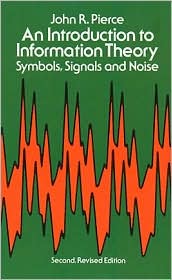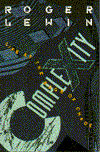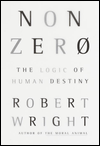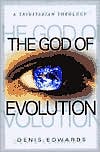Order and Ontogeny (I.D. XXV)
Kauffman's chapter 5, "The Mystery of Ontogeny," is a case in point. Undesigned "order for free," as Kauffman calls it, manifests itself in every living cell.
In ontogeny a fertilized egg cell, or zygote, splits. Then each daughter cell re-splits, and the resultant cells split again, for up to fifty cell generations. The result, if the embryo is that of a human, will be an organism like you or me. A mature Homo sapiens has some 250 cell types, among them skin cells and nerve cells and the cells lining the gut which produce hydrochloric acid and help break down food.
From one cell type, the zygote, come many cell types — but still a tolerably small number, considering the zillions of possibilities when there are 100,000 genes in the human genome, "and 1030,000 possible patterns of gene expression" (p. 107).
Each cell type corresponds to an "attractor," Kauffman shows. An attractor is a set of states of a network, in this case, the network of genes and the proteins they code for in a cell. Gene A might produce, indirectly, a protein which turns off ("deactivates" or "represses") gene B, or turns on ("activates" or "promotes") gene C.
The pattern of which genes are on and which are off determines the cell type, though all cells basically have an identical copy of the genome. But, to maintain its pattern, a cell has to engage in a round-robin of molecular reactions, a series of intermediate states which form a closed loop.
That closed loop is the attractor for the type of cell it is. When the cell is exposed to oddball chemical influences from outside itself, it is perturbed temporarily away from its attractor. But, due to homeostasis, gradually it tamely returns to the state cycle which constitutes its attractor. The reason for this, Kauffman shows, is that the perturbation leaves it in the original "basin of attraction," wherein the attractor itself if bound to reassert itself.
(See Basins of Attraction for more about attractors and basins.)
In Dembski's terms each cell, of whatever type, represents complex specified information, or CSI. That a cell's very existence is an "event" whose content is "information" is obvious from the fact that there are so many possible cell types which the 250 types we humans possess are drawn from. The type of any given cell reduces our uncertainty about which possible cell configuration we are dealing with — and uncertainty reduction is, Dembski says, the mark of information.
That the cell is complex is obvious from the fact that there are so many genes and proteins involved in the business the cell transacts.
That the cell is specified has to do with its unique, independently justifiable function. A HCl-producing gut cell has a specific function, apart from whatever its molecular constitution happens to be. So does a nerve cell, though it's a different function. So, too, does a skin cell. Each cell type's function is, in Dembskiyan terms, its "specification."
Dembski says that CSI in nature implies an intelligent designer. For where else could it come from?
Well, possibly from self-organization, Kauffman implies. (Kauffman was writing in advance of the intelligent design movement and does not address Dembski's claims directly.)
Kauffman shows that any genome, human or not, is apt to manifest gene-protein activity similar to that found in abstract networks that use what he calls "canalyzing" Boolean functions (see p. 103).
Boolean networks in general are those in which network constituents receive "inputs" about the states (on or off) of some of the other constitutents. Based on these inputs, each of which is either a 1-for-on or a 0-for-off, a constituent derives its own "next" state, on or off.
To do so, it uses one of a potentially large number of Boolean functions. A simple example is the OR function. If a constituent has exactly two inputs, and either is on (or both are on), that constituent will be on in the next time period. But if neither input is on, the constituent will be off.
In the case of a cell, the constituent may be a gene which codes for a protein that breaks down lactose or "milk sugar" (see pp. 100ff.). The Boolean function may be NOT IF, such that if a repressor molecule (made by another gene) is present, the gene will be inactive ... but not if there is also present a molecule called allolactose, which will be present if lactose is. In this way, a bacterium "turns on" its ability to process lactose only when lactose is actually present.
Genetic networks are, Kauffman says, essentially Boolean networks. When each gene has just two molecular inputs — in this example, the repressor and allolactose — the network is bound to be in the homeostatic, orderly regime.
But when each gene has more than two molecular inputs, the cell is prone to chaos — unless the Boolean functions used by the genes are "canalyzing." In that special case, one value of one of the several molecular inputs to a gene — either "present" or "absent" — renders all the other inputs irrelevant.
Luckily, canalyzing Boolean functions for manifold (i.e., more than two) inputs, though they are demonstrably in the minority, "are simple to build from a molecular point of view" (p. 106). So living cells are likely to "prefer" them. And even if they didn't prefer them, natural selection is apt to rule out cell types that feature non-canalyzing Boolean functions, since such cells would be prone to chaos.
All of which means that calm, orderly, useful cell types which gravitate to a tolerably small number of homeostatic attractors are to be expected in nature.
And that finding calls Dembski's ideas seriously into question. For CSI to imply design, it has to (among other things) be unlikely. The probability of the manner in which it is organized having happened by sheer luck of the draw must be low. Only then can we leverage the fact that it is "specified" — has a comprehensible function above and beyond the manner in which it is organized — into a presumption of design.
Kauffman makes it clear that attractors, ratified by or culled by natural selection, rather easily account for various cell types and, consequently, cell functions. That there is an attractor in the human genomic network for cells that produce hydrochloric acid is not all that surprising, given self-organized "order for free" and selectional sifting.
Furthermore, the specifics of the human gut cells' chemistry are not all that crucial. There are almost certainly other attractors in other hypothetical genomes which also promote HCl production. If humans didn't have the genome-cum-attractor that they do, there'd be some other cell type in our biosphere which produces hydrochloric acid and can serve digestion. We'd use that. The biochemical details would be different, but the specification would be the same. Any candidate specification, all-important to CSI in Dembski's worldview, is so much easier to implement, by virtue Kauffman's self-organization, than our ordinary estimates of probability would indicate.
This hurts Dembski's case in the following way. Dembski assumes that complexity and improbability are virtually synonyms. That is, if something such as a human gut cell is highly complex, then it must be highly unlikely. It must have an ultra-low probability of coming to be.
For instance, imagine a lottery in which various candidate genes — or, equivalently, the proteins which the genes code for — are drawn at random. There may be 100,000 genes/proteins in our genome. In a gut cell, as in any other cell type, a large number of these genes are "off" or inactive. But still, to draw just the ones that need to be present and active in an HCl-producing human gut cell would happen only at vanishingly small odds.
Looked at this way, complexity equals improbability.
But Kauffman's insights into self-organization and "order for free" make such complexity expectable, not improbable. In Kauffman's world, complexity does not equal improbability.
Which cuts Dembski off at the knees. If complexity such as is found in nature is not as improbable as we might have thought, then CSI is less likely to imply intelligent design!


















0 Comments:
Post a Comment
<< Home